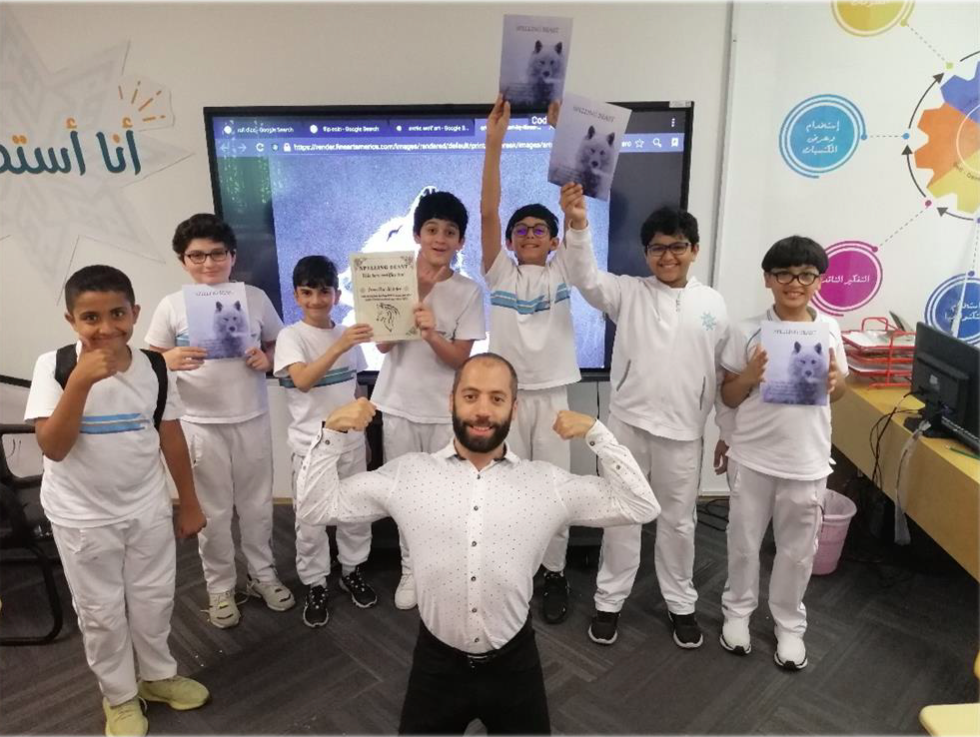Transforming Teaching Practice: My Journey with Cambridge PDQs

“For the first time, I feel confident and excited to show up at the first period of my class and know exactly how to run a stress-free classroom conducive to a healthy learning environment. I have grown exponentially as a teacher ever since taking this programme. Teaching is not easy, but all the right tools and programs are available for us. “The mind needs books as a sword needs a whetstone.” this certificate is both the book and the whetstone.” – Rami Ghamrawi, Distinction in Cambridge PDQ Teaching and Learning.
When I first enrolled in the Cambridge PDQ programme, I wanted the Cambridge certification as it would look good on my CV. After a few weeks in the programme, however, I quickly realized that I would be learning everything in this programme, from lesson planning to differentiation, to be a confident teacher skilled in practical ways to manage my classroom efficiently. Most importantly, I learned how to conduct an enjoyable, effortless, and productive lesson while maximizing my students’ engagement rate throughout class time.
The Cambridge International Certification in Teaching and Learning (CICTL) adds immense value to any teacher seeking to elevate their teaching expertise from the mediocre to the exceptional.
Over four months and 150 hours of guided learning, individual study, collaborative learning, and school-based learning, teachers will become reflective practitioners by critically observing and analyzing their own work. The practical skills, hands-on activities, and assignments that the CICTL offers will allow teachers to thrive with their students in highly achieving classroom cultures. Professional Development Qualifications (PDQs) also equip interested educators with diverse learning outcomes. In this blog, I will be on three outcomes: an educational theory, means of assessment, and running an effective lesson.
“Read” – The Angel Gabriel to Prophet Mohammad (pbuh).
To complete your PDQ portfolio, you will have to read books on teaching methodologies and on
effective theories in education so you can learn the science behind every decision that you should
make or avoid in class.
Constructivism: Understanding the Science Behind Teaching Decisions
Constructivism occurs when the learner actively constructs new knowledge by connecting it with previous contexts, beliefs, and attitudes (Petty, 2011). For example, if you are teaching English and want to apply constructivism to your lesson, you can begin by reading a fable with your students. Then, you can ask them: “What is the lesson of this story?” Most of your learners will know how to deduce the proper lesson from the story.
Afterwards, you can announce that the lesson of a story is also called “moral.” This way, you will have introduced a new key term (moral) in relation to their previous understanding of what the lesson of a story means. The PDQ will allow teachers to apply constructivism with a defined purpose that aligns with their teaching objectives.
Before Cambridge PDQ, I may have used constructivism haphazardly without being aware of the approach and the theory. Many novice teachers are guilty of this early on in our teaching careers. Most of our activities have no defined purpose; we simply compile and label them under the vague umbrella of “discussion”. However, when you clearly define what constructivism is and when you begin applying it to your own practice, your teaching starts to shift from the mediocre to the exceptional.
“Assessment is the bridge between teaching and learning.” – Dylan Wiliam.
Assessment can be limited or expanded by the teacher’s own imagination. Each teacher will find unique assessment techniques that meet their needs and the needs of their students.
How the Cambridge PDQ equips teachers with a variety of assessment techniques:
Assessment does not have to be restricted to weekly quizzes and monthly tests to measure student progress. Let us briefly examine the main types of assessment:
- Formative assessment: continuous evaluation of student work.
- Summative assessment: measures student progress after a unit or term.
- Self-assessment: giving students opportunities to self-evaluate.
- Peer-assessment: students evaluate each other.
- Diagnostic assessment: checking your students’ levels before the start of a teaching unit.
Summative assessment is important because it helps the teacher measure how far the students have come and how well they have integrated the material of the previous learning unit. Formative assessment, or assessment for learning, is the continuous evaluation of student work day to day, or even minute to minute (William, 2006).
Cambridge PDQ ensures that candidates are progressing as educators by allowing candidates to use, provide evidence of, and to reflect on a variety of assessment methods throughout the certificate programme.
“Our aims are to intervene elegantly and helpfully wherever we can be most useful, while taking care not to inadvertently prevent learning through over-help, over-direction, and over-praise.”- Jim Scrivener
Teaching does not always equate to learning.
Cambridge PDQ emphasizes that teachers should share clear learning goals with the learners and actively involve them, as this will raise learners’ motivation. Teachers will also begin to recognize the students as the main drivers of the learning process. As a result, teachers can now alternate between the two approaches of teacher-centered (lecturing) or learner-centered (interactive) methods depending on how they see fit.
A blueprint of an interactive approach
First, a successful lesson should share clear objectives with the students to increase their motivation and engagement (Reed, 2012). A warm-up motivates learners for the Lesson, and it helps them anticipate the new content.
Second, a teacher should keep measuring the learners’ understanding of new concepts throughout a lesson (ongoing formative assessment) to guarantee that learning is taking place.
Third, technology could also be an effective supplementary tool to make any lesson more engaging. The SAMR framework of technology integration is a great way to enhance your lessons according to your needs.

In conclusion
A student-centered lesson should include clear aims, a warm-up, technology integration, and a variety of assessment methods and learning activities to ensure accurate learning. Cambridge PDQ taught me how to apply and modify this formula based on my students’ needs to guarantee that an exceptional learning experience is always taking place in my class.
The programme was delivered through the Aanaab platform under Emkan Education’s supervision, an approved Cambridge Professional Development Centre that is quality-assured by Cambridge International.
References:
[1] Petty, G., 2011. Constructivism – a learning process.
[2] Reed, D., 2012. Clearly communicating the learning objective matters! Middle School
Journal, Volume 43, pp. 16-24.
[3] Wiliam, D., 2006. Assessment for learning: Why, what and how, Cambridge: Cambridge
Assessment Network.
Most Popular










